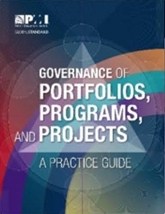In an earlier post I looked at the governance and management of organisations from the perspective of Systems Theory, (See the post), this post looks at the functional differences between the two roles.
The purpose of any system is to deliver functionality or capability; governance and management are no different. However, for there to be a valid difference between governance and management, there has to be a different functional purpose. The purpose of this post is to define this difference!
There are three basic layers of functionality within any organisation:
- The producers of goods and/or services, the production workers and/or knowledge workers;
- The various layers of management who oversight and direct the production/knowledge workers;
- The ‘governors’ of the organisation who oversight and direct the managers.

Within this functional framework an individual may operate at different levels at different times depending on the actual function they are performing. A few examples include:
- A front line supervisor or team leader may spend some of her time working as the first line of management directing the work of others, and the rest of the time as a worker producing goods or services.
- A newspaper editor is primarily responsible for the direction and management of sub-editors and journalist with a view to getting ‘today’s issue’ to the presses on schedule, but also functions as a knowledge worker when drafting the ‘editorial column’.
- In corporations, executive directors operate at the governance level when acting as Board Members, as managers when directing the operations of the organisation.
The above clearly demonstrates function and position are not synonymous. But equally, it is important for a person in a position to understand the function they are currently performing.
Production/Knowledge work
The function of any worker is to produce goods services or other outputs as efficiently as possible. In simple organisations and pre-industrialisation, workers were typically responsible for all aspects of the production process in ‘cottage industries’; exchanging their surplus production for their other needs in local markets.
The advent of industrialisation and the division of work into highly specialised operations introduced the requirement for managers to organise the supply chain, the work and the workers; in order to obtain the efficiencies available from these ‘new’ production systems. The concepts of management were largely defined in the late 19th and early 20th century.
Management
There were many contributors to the development of management theory, Taylor’s Scientific Management focused on performance measurement and process optimisation. The Gilbreth’s, Henry Gantt and George Mayo added the concepts of efficiency, leadership, incentivation and motivation; and Max Weber introduced the concept of bureaucracy (standardising procedures and record keeping).
The overall definition of the function of management was created by Henri Fayol. His six primary functions of management are:
- Forecasting.
- Planning.
- Organising.
- Commanding.
- Coordinating.
- Controlling.
Implicit in these 6 factions is the requirement for decision making! The core purpose of management is to make the optimal decisions to make the work of the organisation as efficient and sustainable as practical.
It’s worth remembering, the production and knowledge workers in any organisations will generate some level of output without any input from management. And as Peter F Drucker commented ‘So much of what we call management consists of making it difficult for people to work.’
The function of effective management in a well structured organisation is to create efficiencies in the accomplishment of the ‘right amount’ of the ‘right work’ at the ‘right time’ that are greater than the costs associated with managing the organisation (or at the very least, better then competing organisations). To achieve this, the functions of forecasting, planning, managing and controlling the work, and recording the outcomes; needs to be undertaken within a governance framework that informs the decision making to achieve the optimum outcomes.
Governance
The function of governance is to provide oversight and direction to the management of the organisation. The Organisation for Economic Co-operation and Development in the OECD Principles of Corporate Governance 2004 (www.oecd.org) define governance as: ‘involving a set of relationships between a company’s management, its board, its shareholders and other stakeholders. Corporate governance also provides the structure through which the objectives of the company are set, and the means of attaining those objectives and monitoring performance are determined’
The primary elements necessary to achieve this objective are outlined in the diagram below:

Governance is a holistic process, a failure in any one area will cause damage in others; a few recent examples include:
- The damage to David Jones’ reputation and share value caused by inappropriate interactions between a senior manager and a female employee.
- The vast amount of damage caused to BP due to failures in safe operating procedures leading to the Deepwater Horizon disaster.
- An inaccurate press release leading to the conviction of several Directors of the James Hardy group (under continuous disclosure requirements of the ASX).
- The legal actions brought against Centro for the misallocation of debt despite receiving and applying advice from a leading international accountancy firm.
- The personal liability of Directors under various legislative regimes for breaches of taxation requirements, OH&S failures, insolvent trading, etc.
Whilst avoiding ‘failure’ is important, the primary function of governance is to create sustainable success. This is of necessity, a multi-faceted process that requires the careful balancing of different, frequently contradictory, objectives. For example:
- The resources committed to implementing a future strategy cannot be used to enhance current viability or profitability causing a short term loss of value or revenue.
- However, if no commitment is made to develop the future of the organisation, the organisation itself will quickly become uncompetitive and irrelevant, destroying value for its owners in the longer term.
Determining the right balance is a governance decision. Implementing the decision is a management function.
In the area of strategic change, doing the ‘right project right’ is woefully inadequate. An effectively governed and managed organisation starts with a well defined strategy, and manages each selected project or program through the organisational changes needed to make full use of the outputs to the maximisation of the benefits realised; recognising that in a changing world, the potential benefits will be changing throughout the whole life of the initiative and adapting to optimise the overall outcomes (for more on this see: The failure of strategic planning).
Who governs?
There are two schools of thought about governance. One body of literature sees different types of governance, primarily corporate governance, IT governance and project governance. The people developing this concept are almost exclusively project mangers, IT managers and academics focused on these disciplines. Interestingly there does not seem to be a similar body of literature focused on HR governance, financial governance or any other area of management. This school of thought sees governance being a function of almost any management position or entity responsible for overseeing the work of IT departments or projects including sponsors and project boards.
The alternative school of thought developed by organisations such as the OECD, various Institutes of Directors and the agencies responsible for governing the various stock exchanges see governance as a single process with different facets. The approaches taken by various governments in legislating liability for corporate and governance failures supports this holistic view. The Directors of corporations are being increasingly made personally responsible for governance and management failures.
An interesting exception to the concept of ‘project governance’ being something different and special is the various guides developed by the Association for Project Management (APM, UK). The recently published 6th edition of the APM Body of Knowledge sees ‘the governance of portfolios, programs and projects as a necessary part of organisational governance.’ And governance as: ‘the set of policies, regulations, functions, processes, procedures and responsibilities that define the establishment, management and control of projects, programs and portfolios.’
In the referenced source document: Directing Change A guide to governance of project management, the body defined as responsible for governance is the organisations ‘Board’. In this context, the term ‘board’ applies to management boards and their equivalents in the public sector and to councils in companies limited by guarantee. It does not refer to project boards.
In a well governed organisation, responsibility for implementing defined aspects of the governance system is delegated to the appropriate management levels together with the necessary authority to undertake the work. Accountability for the governance of the organisation remains with the board of the host organisation. The resulting governance structure is outlined as:

Figure 1.2 Governance Structure © 6th Edition, APM-BoK, UK.
The concept of delegation outlined above is important; a key principle in managing governance is summed up in the legal doctrine ‘delegatus non potest delegare’… unless expressly authorised a delegate cannot delegate to someone else.
Part of the governing board’s responsibility is to ensure appropriate delegations of authority are made to management so they can develop an effective system of management that meets the governance needs of the organisation. However, delegating authority and responsibility to management does not remove the ultimate accountability for ensuring ‘good governance’ from the Board.
Interestingly, the APM-BoK acknowledges that in poorly governed organisations project teams may have to take responsibility for governing themselves. This lack of organisational maturity (and capability) is the focus of our paper ‘The Management of Project Management’ (due for publication Oct. 2012) and is the likely reason for the emergence of the separate concepts of project governance and IT governance outlined above.
Unfortunately the creation of ‘special’ governance sub-sets separate from the overall governance function compounds the immature governance the special functions are supposed to resolve – when projects fail and benefits are not realised the organisation suffers as a whole. In the absence of an effective governance system these ‘project failures’ are far more likely to be caused by general management failings than by project management failings (see: Project or Management Failures?).
Summary
The function of governance is and should be separate from the function of management although some managers may fulfil both governance and management functions at different times.
The core principles of effective governance are:
- It is a holistic process focused on the creation of sustainable value by the organisation. Authority for some aspects of governance can be delegated to management, accountability remains with the governing Board.
- Governance and management should be separate; importantly a manager cannot govern his/her own work.
- The governance structure is defined by the governing board and implemented by management (see our White Paper: Project Governance).
- A core aspect of good governance is making the decisions to invest in developing the appropriate capabilities to ensure organisational resources are used efficiently and effectively. The management systems and structures needed to create value from projects and programs are outlined in our White Paper: Project Delivery Capability.
 To succeed, organisations need to evolve and mature their management processes to achieve consistent success in the delivery of their projects and programs. However, there are no silver bullets – the core drive to be successful, and most of the effort, has to come from within the organisation and be fully supported by senior executives and other key stakeholders. This article outlines the journey to success: https://mosaicprojects.com.au/Mag_Articles/SA1068_Governing_for_Success.pdf
To succeed, organisations need to evolve and mature their management processes to achieve consistent success in the delivery of their projects and programs. However, there are no silver bullets – the core drive to be successful, and most of the effort, has to come from within the organisation and be fully supported by senior executives and other key stakeholders. This article outlines the journey to success: https://mosaicprojects.com.au/Mag_Articles/SA1068_Governing_for_Success.pdf








